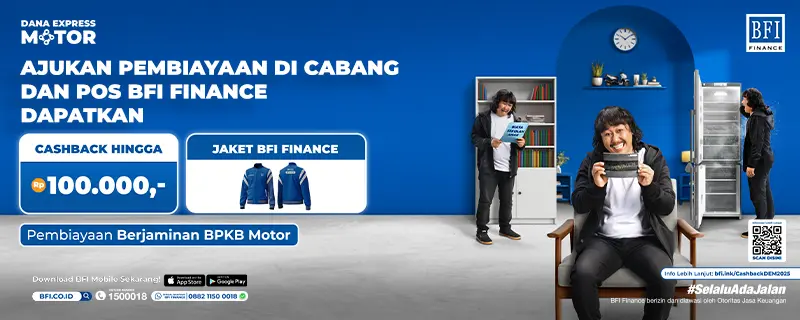Money laundering is one of the crimes associated with suspicious financial transactions. This unethical behavior has long been a homework with the state and society in fighting it. This is because the resulting losses are not small and have an impact on many people. Therefore, Indonesia in particular has a Financial Transaction Reports and Analysis Center (PPATK), as a financial institution tasked with preventing and eradicating this money laundering crime. Seeing this urgency, the BFI Finance team felt the need to provide understanding to all BFI friends, about what money laundering is and what can cause someone to fall into this disgraceful behavior. Here's the full explanation.
Definition of Money Laundering
Money laundering is the act of disguising funds or assets that are not entitled to and derived from criminal activities. The purpose of someone doing money laundering is none other than to enrich himself. This illegal activity is carried out by disguising the source of funds as if they came from legal activities, and usually, money laundering persons transfer these funds through business activities and submit them to legal financial institutions.
The legal basis for money laundering activities is regulated in Law no. 8 of 2010.
Legal Basis for Money Laundering
Based on Law no. 8 of 2010 concerning the Prevention and Eradication of the Crime of Money Laundering, acts categorized as money laundering are:
- Placing, transferring, diverting, spending, paying, granting, entrusting, bringing abroad, changing the form, exchanging with currency or securities, or other actions on assets that are known or reasonably suspected to be the proceeds of criminal acts with the aim of concealing or disguising the origin of wealth.
- Conceal or disguise the origin, source, location, designation, transfer of rights, or actual ownership of assets that are known or reasonably suspected to be the proceeds of a criminal act.
- Receive, control the placement, transfer, payment, grant, donation, safekeeping, exchange, or use of assets that he knows or reasonably suspects are the result of a criminal act.
The punishment for perpetrators of money laundering in accordance with the above laws and regulations is a maximum imprisonment of 20 (twenty) years and a maximum fine of Rp. 10,000,000,000 (ten billion rupiah).
Types of Money Laundering
The money laundering process includes three steps that form the basis for the operation of these illegal acts, namely:
Placement
The first act of money laundering or money laundering is the placement of money. The placement process is when the illegal funds enter the financial system. The financial system here means the financial institution that is the place to put the illegal funds, which can be in the form of banks, finance companies, insurance companies, and others. At this stage, the perpetrators usually break the illegal funds into several small fractions so that they are not easily detected. Then, transfer the money by making checks, deposits, financing, and other legal financial activities.
Layers
The second step of the money laundering action is to carry out layering activities. Layering is an activity carried out to keep the money obtained from the crime. The usual way money laundering actors do this is by buying assets, investing, or spreading the money by opening bank accounts in several countries with tax havens criteria. Tax havens are countries that allow owners of financial instruments not to pay taxes on their business activities or investments. Thus, money from money laundering activities in nominal terms is not reduced and is felt safe because it is located far abroad. Another way of layering process is by conducting offshore banking activities and transactions using shell corporations.
Integration
The last step that is usually taken from money laundering is integration. Integration activities are efforts to combine or use money from money laundering to be enjoyed directly, invested in various types of financial products, used to finance legitimate business activities, and refinance criminal activities. The way money laundering is usually done is by investing in business activity, selling and buying assets, as well as corporate financing.
However, in practice, money laundering actors do not always carry out the above three processes in stages, but by combining and performing the above stages repeatedly, so as to create a money laundering process that is complicated, organized, and involves many parties.
How to Prevent Money Laundering
Reporting from the official OJK page, there are several behaviors to prevent someone from money laundering. Here are some preventions from this harmful activity.
1. The Role of Financial Service Providers
- Implement an anti-money laundering program by conducting Customer Due Diligence (CDC) and Enhanced Due Diligence (EDD) to identify customer profiles and risks. The implementation of CDC and EDD can be carried out starting from identification, verification, monitoring of prospective customers, and updating of customer profiles.
- Monitoring and updating data to find out the updated customer profile and risk.
- Maintain statistical data on accounts that have been reported.
- Submitting Cash Financial Transaction Reports (LTKT), Suspicious Transaction Reports (LKTM), Financial Transaction Reports on Transfers of Funds From and To Overseas (LTKL) to the Financial Transaction Reports and Analysis Center (PPATK).
2. The Role of Financial Services Provider Customers
- Mandatory to provide the correct identity and information required by the Reporting Party by at least containing the identity, source of funds, and purpose of the Transaction by filling out the form provided by the Reporting Party and attaching supporting documents.
- In the event that the transaction is carried out for the benefit of another party, each person is required to provide information regarding his/her identity, source of funds, and the purpose of the Transaction of the other party in an honest and accountable manner.
- Money transfer transactions through the transfer system are required to provide correct identity and information regarding the original sender, original sender's address, recipient of the remittance, amount of money, type of currency, date of remittance, source of funds, and other information based on statutory provisions. given to the Financial Services Provider.
- Strictly refuse to keep other people's funds in their accounts without clarity of the origin of the source of funds.
- Strictly refuse funds of unknown origin.
3. The Role of the General Public
- Do not buy property or assets whose ownership status is not clear.
- Firmly refuses to give donations without clarity on who they are intended for.
- Firmly refuses to finance the purchase of hazardous chemicals suspected of being linked to terrorist activities.
- Not involved in fundraising by the foundation for activities that are not related to the function of the foundation.
- Firmly refuses to assist in the distribution of books, articles, and writings whose contents tend to be anarchic or radical.
Thus the explanation of what money laundering is. BFI Finance always participates in preventing and eradicating these illegal practices, both internally by employees and debtors. Hopefully, we can all avoid this harmful money laundering activity, BFI friends. Because once again, money laundering is behavior that is not only detrimental to oneself but also to many parties.







